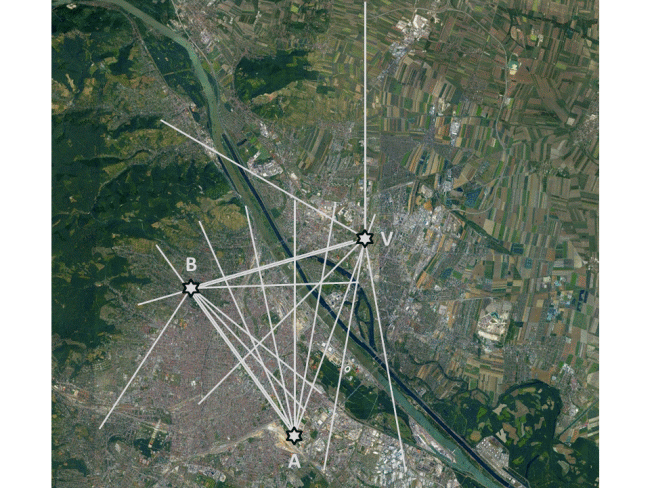Project Overview
-
The overall goal of the project is to improve our current knowledge of air pollution in large agglomerations caused by mankind.
-
The investigation of nitrogen dioxide (NO2) and aerosol amounts will be based on spectral measurements from three Multi AXis Differential Optical Absorption Spectroscopy (MAX-DOAS) instruments located at three different sites with ideal measurement conditions in Vienna, Austria.
The MAX-DOAS instrument allows for measurements at different viewing directions and thus, it can be used for obtaining both the horizontal and vertical variations of trace gases and aerosols in the troposphere – useful measurements for quantifying air pollution.
- The retrieval of tropospheric columns and vertical profiles of NO2 and aerosols will be based on the fast geometrical approximation and the more accurate optimal estimation method implemented in the Bremian advanced MAX-DOAS Retrieval Algorithm (BREAM).
- On the one hand, altitude-averaged tropospheric vertical trace gas columns retrieved from MAX-DOAS together with meteorological measurements (e.g. wind speed, wind direction) allow the monitoring of air pollutants (NO2 and aerosols) for urban background, high-traffic roads, and industrial point sources on the horizontal level.
On the other hand, vertical profiles provide valuable information for the comparison with in-situ measurements in Vienna.
- The proposed long-term measurements (more than two years) will provide a valuable data set for analyzing the temporal variability of air pollutants over Vienna.
The three MAX-DOAS instruments will be added to the Bremian DOAS Network for Atmospheric Measurements (BREDOM).
Moreover, these data will be used for the comparison with MAX-DOAS observations in Athens, Greece, and Bremen, Germany to investigate similarities and differences between polluted sites at different latitudes and meteorological and photochemical regimes. Tropospheric vertical columns of NO2 will also allow the validation of satellite measurements from the OMI, GOME-2, and TROPOMI instruments as well as comparison with model simulations, for example from the COPERNICUS atmospheric monitoring service.
- As the measurements of the three instruments cover several azimuthal directions with partially overlapping fields of view, these data together with in-situ measurements provide a multitude of information on the spatial NO2 distribution, enabling an attempt to develop a spatially resolved image of air pollution for Vienna using a tomographic imaging approach – a novel method with respect to MAX-DOAS and a large city like Vienna.
- The results of the project will provide information about the horizontal and vertical distributions of NO2 and aerosols over an urban environment. In addition to improvements in trace gas retrieval methods, the results will also provide important information for the model community, as the vertical profiles of NO2 are a useful supplement to the point measurements of in-situ instruments.

